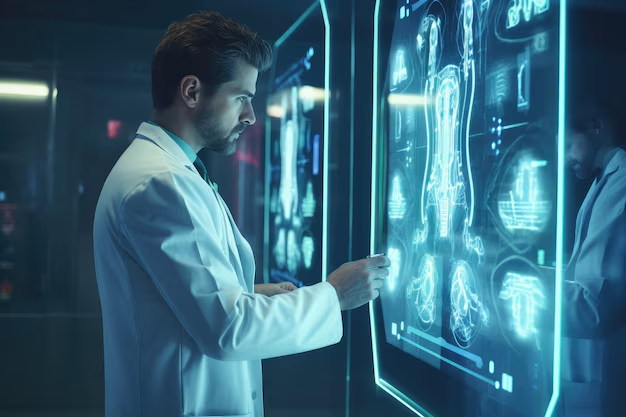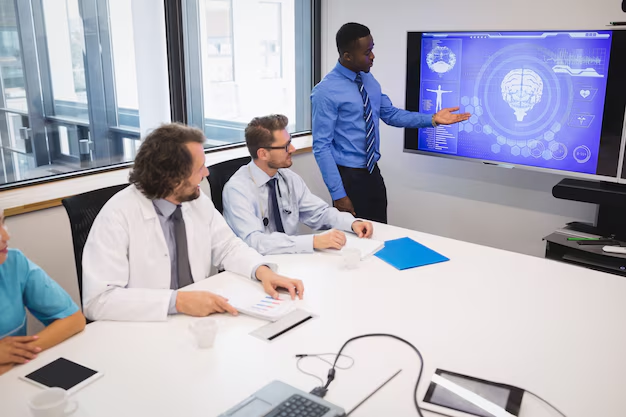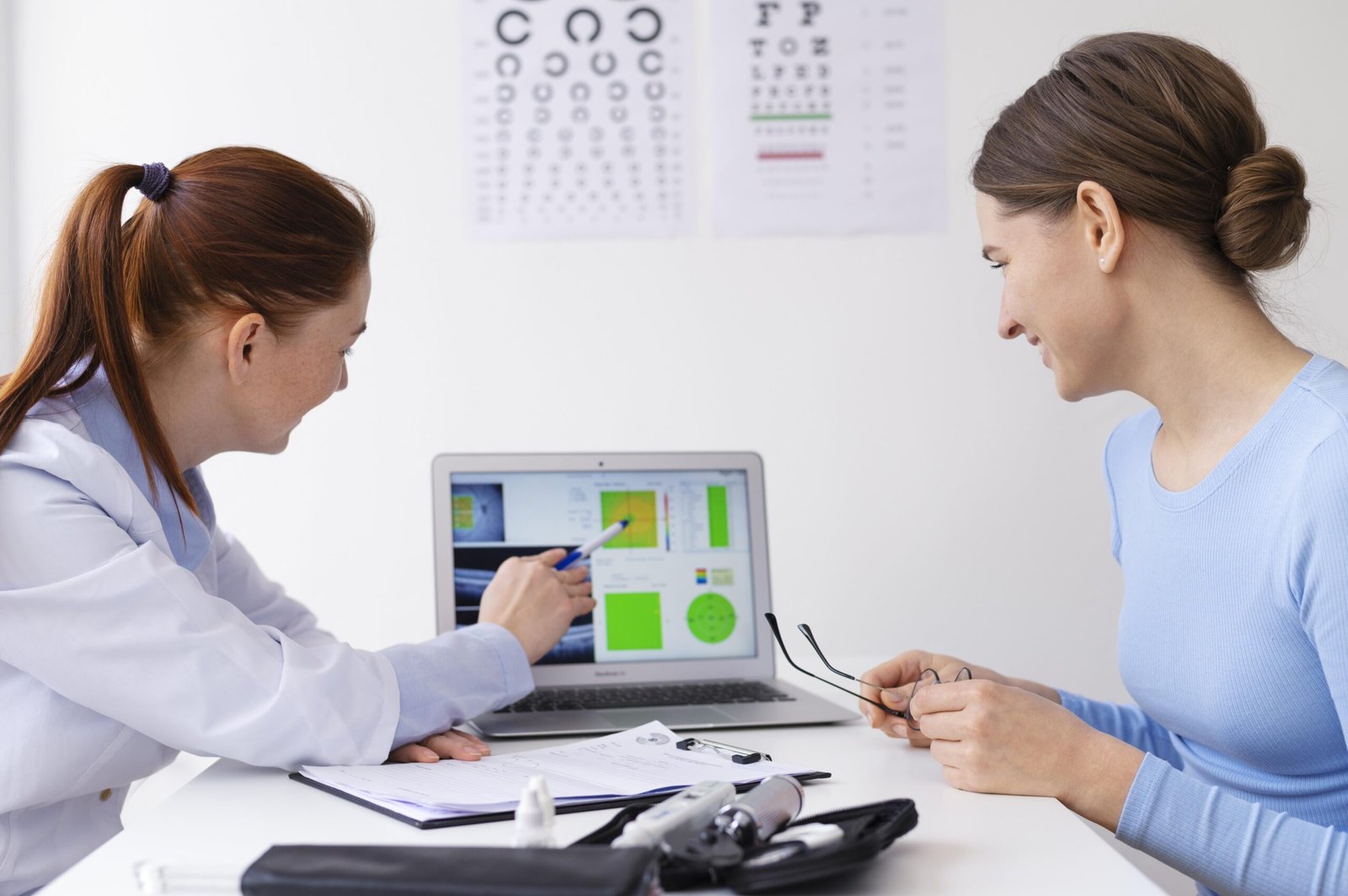Medical simulation is revolutionizing healthcare education by providing a safe, controlled, and effective environment for healthcare professionals to practice and refine their skills. Over the past few decades, advances in technology have made medical simulations more realistic and accessible, transforming the landscape of medical education. This article explores how medical simulation is advancing healthcare by enhancing education and training, improving patient safety, and fostering a more skilled and prepared workforce.
Key Takeaways
- Medical simulation is a powerful tool in healthcare education, providing learners with hands-on experience in a controlled, risk-free environment.
- It improves patient safety by allowing healthcare providers to practice high-risk procedures and critical scenarios.
- Simulation is cost-effective in the long term, reducing the need for patient care resources while offering opportunities for repeated practice.
- It fosters interdisciplinary collaboration, allowing different healthcare professionals to work together as a team.
- Medical simulation plays a key role in lifelong learning, enabling healthcare professionals to stay updated on best practices and improve patient care.
The Evolution of Medical Simulation

Medical simulation refers to the use of advanced technology to recreate realistic clinical scenarios that healthcare providers can use for training, assessment, and research. Historically, medical education involved traditional methods, such as lectures, textbooks, and clinical rotations, where students observed and interacted with real patients under the supervision of experienced practitioners. While these methods provided valuable learning experiences, they also presented challenges, such as the risk of patient harm, the variability in patient cases, and limited access to clinical scenarios.
The advent of medical simulation has transformed this paradigm. In the early stages, mannequins and models were used to simulate basic procedures and anatomical structures. Over time, however, advancements in computer technology, virtual reality (VR), augmented reality (AR), and artificial intelligence (AI) have allowed for the creation of highly sophisticated, interactive simulations that replicate real-life medical scenarios. These simulations provide learners with opportunities to practice clinical skills, make critical decisions, and experience the consequences of their actions in a controlled environment.
Today, medical simulation is an integral part of medical education, and it continues to grow and evolve, playing a critical role in transforming the healthcare system.
Benefits of Medical Simulation in Healthcare Education
Enhanced Learning and Skill Development
Medical simulation allows students and healthcare professionals to practice a wide range of clinical skills in a risk-free environment. From basic procedures like taking blood pressure to advanced skills like performing surgery, simulation provides learners with an opportunity to practice repeatedly, without the fear of harming real patients.
By engaging in realistic scenarios, learners can develop essential technical skills, improve their decision-making abilities, and enhance their overall clinical competence. Moreover, simulations often include debriefing sessions, where learners can reflect on their actions, receive feedback, and identify areas for improvement.
Improved Patient Safety
Patient safety is a top priority in healthcare. Simulation training allows healthcare providers to practice high-risk procedures and critical situations that they may not encounter frequently in real life. For example, simulating a cardiac arrest scenario allows medical professionals to practice their response to life-threatening emergencies, ensuring they are prepared for such situations in real-world settings.
Additionally, simulations can be designed to mimic rare or complex medical cases that may be difficult to encounter in clinical rotations, giving trainees exposure to conditions they might not otherwise experience. This training helps to reduce errors and improves the overall quality of care delivered to patients.
Cost-Effective Training
Traditional clinical education often requires substantial resources, including patient care, clinical supervision, and access to various medical facilities. Medical simulation, on the other hand, can significantly reduce these costs by providing a cost-effective alternative. Once the simulation infrastructure is in place, simulations can be repeated as often as needed, without incurring additional costs related to real patient care.
Moreover, simulation allows healthcare professionals to experience rare or complex medical conditions without the need for a high volume of patients or resources, making it a more efficient and sustainable training method.
Standardization of Training
In real-world clinical settings, there is significant variability in the cases and conditions that healthcare professionals encounter. This variability can lead to inconsistencies in training and skill development. Simulation, however, allows for the standardization of training, ensuring that all learners have access to the same scenarios and experiences.
Standardized training through simulation ensures that all healthcare professionals are exposed to essential skills and critical situations, regardless of their clinical rotations or patient interactions. This uniform approach to education enhances the consistency of healthcare delivery and promotes the highest standards of care.
Interdisciplinary Collaboration
Medical simulation offers a unique opportunity for interdisciplinary collaboration among healthcare teams. In real-life healthcare settings, medical professionals work in teams that may include physicians, nurses, anesthesiologists, paramedics, and other specialists. Effective communication and collaboration are crucial in ensuring optimal patient care.
Simulation-based training can bring together members of different healthcare disciplines to practice working as a cohesive team. This type of collaborative simulation helps learners understand their roles and responsibilities within a team, improve their communication skills, and enhance their ability to work together under pressure.
Assessment and Feedback
Medical simulation provides a valuable tool for assessing healthcare professionals’ skills and performance. Simulation allows for the evaluation of both technical and non-technical skills, including communication, decision-making, and teamwork. Real-time data and feedback from simulations can be used to assess an individual’s performance and identify areas for improvement.
Moreover, simulation-based assessments provide an objective measure of competence, ensuring that healthcare professionals meet the necessary standards before working with real patients. This form of assessment is particularly valuable for high-stakes evaluations, such as licensure exams and competency-based assessments.
Fostering Lifelong Learning
Healthcare is an ever-evolving field, with new technologies, treatment protocols, and research emerging regularly. Simulation allows healthcare professionals to stay current with the latest advancements and continuously refine their skills. Lifelong learning is a critical component of professional development in healthcare, and simulation is an effective tool for achieving this.
By participating in simulations throughout their careers, healthcare providers can maintain and expand their skills, stay updated on best practices, and improve patient outcomes.
Types of Medical Simulation

There are several different types of medical simulation that cater to different aspects of healthcare education and training:
Mannequin-Based Simulation
Mannequin-based simulations are the most common form of medical simulation. These high-fidelity mannequins can simulate realistic physiological responses, such as changes in heart rate, blood pressure, and respiratory rate. They are used to practice basic and advanced medical procedures, such as CPR, airway management, and surgical techniques.
Virtual Reality (VR) Simulation
Virtual reality simulation immerses learners in a computer-generated environment where they can interact with 3D models of the human body, practice surgical procedures, or respond to medical emergencies. VR offers a high level of interactivity and allows for the simulation of complex and dynamic scenarios.
Augmented Reality (AR) Simulation
Augmented reality integrates digital information with the real-world environment. AR can be used in medical education to overlay anatomical structures, diagnostic data, and procedural instructions onto a physical patient or model, enhancing the learning experience.
Standardized Patient Simulation
Standardized patients are trained actors who simulate medical conditions and interact with learners as if they were real patients. This type of simulation is commonly used to teach and assess communication skills, diagnostic abilities, and patient interaction in clinical settings.
Task Trainers
Task trainers are specialized simulators designed to teach specific skills, such as suturing, catheter insertion, or intravenous line placement. These simulators allow learners to practice repetitive tasks and refine their technique before performing them on real patients.
Medical Simulation Market: Transforming Healthcare Education and Training
Medical Simulation market stands at the forefront of healthcare education and training, providing immersive, lifelike simulations and virtual learning environments for healthcare professionals to practice clinical skills, refine procedural techniques, and enhance patient safety. From virtual patient encounters to high-fidelity simulators, medical simulation technology revolutionizes healthcare training across diverse medical specialties.
- Demand for Hands-on Training: The demand for hands-on, experiential learning drives market growth for medical simulation technology, as healthcare institutions and training centers seek innovative solutions to provide realistic, interactive learning experiences for medical students, residents, and practicing clinicians.
- Patient Safety and Quality Improvement: The focus on patient safety, error reduction, and quality improvement initiatives underscores the importance of medical simulation in healthcare education, offering a safe environment for healthcare professionals to practice skills, develop clinical judgment, and mitigate risks before engaging in patient care.
- Advancements in Simulation Technology: Continuous advancements in simulation technology, including high-fidelity manikins, virtual reality (VR) simulators, and augmented reality (AR) platforms, enhance the realism, interactivity, and immersion of medical simulations, enabling realistic patient scenarios, procedural simulations, and team-based training exercises.
- Interprofessional Education: The emphasis on interprofessional education (IPE) and team-based care models drives market trends towards collaborative simulation training, fostering interdisciplinary collaboration, communication skills, and teamwork among healthcare professionals from various disciplines, including medicine, nursing, pharmacy, and allied health.
Request Sample Copy of the Report:
- Patient Simulators: Patient simulators, also known as medical manikins or patient actors, simulate realistic patient anatomies, physiological responses, and clinical scenarios for hands-on training in medical procedures, physical examination skills, and clinical assessments, offering immersive learning experiences in a controlled environment.
- Surgical Simulators: Surgical simulators provide virtual reality-based training modules for surgical skills acquisition, procedural proficiency, and surgical team training, allowing surgeons, residents, and surgical teams to practice surgical techniques, patient positioning, and intraoperative decision-making in a simulated operating room setting.
- Virtual Patient Encounters: Virtual patient encounter platforms offer interactive, case-based simulations and standardized patient encounters for clinical decision-making, history-taking, and diagnostic reasoning exercises, enabling medical students and residents to develop clinical reasoning skills, differential diagnoses, and patient management plans.
- Simulation Centers and Facilities: Simulation centers and facilities provide state-of-the-art simulation equipment, simulated clinical environments, and faculty-led training programs for healthcare education and professional development, serving as hubs for simulation-based learning, research, and innovation in healthcare.
Purpose of Medical Simulation in Education
Clinical simulation has taken off as a performance improvement tool and training modality tool within health care, over the last 15 years. While in the medical field, traditional and older learning mechanisms like apprenticeships, lectures and practice-based learning still continue to offer the students the foundation knowledge that is required for the successful future, simulation-based learning and training have actually revolutionized medical education.
With the originations during a math experiment during World War 2, simulation technologies now have great applications in different industries ranging from entertainment to manufacturing to healthcare. Simulation tools have also found widespread advantages and successes in the field of education, being utilized for training, teaching and testing applications. As computer technology continues to evolve, simulations will become more involved and will continue to transform applications in the field of education.
Domains of Clinical Competence

The six domains of Clinical Competence establishing Basic Physician Competencies are:
- Patient Care
- Medical Knowledge
- Practice Based Learning and Improvement
- Interpersonal and Communication Skills
- Professionalism
- System based Practice.
Dr David Leach, M.D. Executive Director of the American Council for Graduate Medical Education (ACGME) has proposed that Simulation can help achieve our objectives in Resident Education as follows:
Enable the acquisition of skills by Residents in low stakes environment away from the Patient bedside.
Providing the means for Procedures, Treatments Rehearsals and Debriefings.
Serving as a “Formative Tool” for the Residents Development.
Helping to determine just, “How residents respond in different contexts”?
Exposing the mastery of both rules and values through the judicious use of improvisations
Populating a Portfolio of “Assessed Experiences’ that enable residents to demonstrate their abilities.
Permitting Residents to make deliberate errors, to learn about their consequences.
Helping Residents learn “System Based Practice” through Simulation, that involve “Multiple Interdependent Variables”
Documenting just, “How residents think” rather than simply “What they Think”
Expressing Respect in concrete demonstratable manner.
- The future of Medical Student Education, Resident Training and Maintenance of Competence and Clinical Privileges in Practice will , in the years to come bear very little resemblance to the past.
- Simulation, makes us accept the “Primacy of Patient Welfare” and makes us embrace our “Commitment to Professional Competence”.
Advantages of Medical Simulation in Education and Training
- Simulation helps and allows healthcare participants to learn from their mistakes and improve their skills.
- Medical trainees are able to have a greater understanding of all the consequences of their actions and how essential it is to prevent it from happening again.
- Feedback is generated for the users immediately and it helps them to get exactly what went right or wrong. They also know about the underlying effects and how they can improve the results.
- Individual healthcare learners and teams make use of what they have learned hands-on by applying their thinking skills through simulation. For example, this could be involving decision-making, knowledge-in-action procedures and effective communication during a situation. Basically, this allows the interaction of humans with their medical environment and exploration of different medical factors.
- Simulation-based learning can be set up at suitable locations, scenarios, times and repeated as often as required.
- Simulation can be done with the minimal establishment at hospitals and other medical facilities or it can be undertaken in impressively high technology simulation centres.
- Simulation-based learning can be personalized to suit healthcare beginners, intermediates, experts and even adapt to evolve to the learners changing skills.
- Simulators encourage motivation, deepen the process of learning and assist the medical novice to become a healthcare expert by providing a mechanism to generate an understanding from another medical participant’s perspective.
- Debriefing tools that include peer review and video feedback are some key features of the simulation education, training and learning strategy.
These are some advantages of medical simulation that shows how it is transforming medical education and training. Now, let’s discuss them in more detail.
Benefits of Medical Simulation
- Training on Simulators can help foster a culture in which Clinicians feel comfortable critiquing their own performances.
- Simulators help create “On Screen Scenarios with Tactile Realism” on demand e.g. VST Vascular Intervention Systems Training.
- The Current generation of Medical Personnel and Learners are very comfortable with Computers and they take to Simulation and Virtual Reality with great ease.
- As 3D Reality becomes more sophisticated, they will eventually replace even Manikins.
- Simulators powerfully make you suspend “Disbelief” Even if the patient is not real, the agony of trying to save life is real.
Suspending “Disbelief” is the key. Those undergoing training, must be able to feel and think as though they are performing within a real environment where their actions are associated with real consequences.
These training settings are not possible in classrooms which lack the multiple cues found in dynamic complex technical domains. Realism induces a sense of “Disbelief”. Suspension of Disbelief is a powerful factor in improving diagnostic skills and clinical judgments
Medical Simulation provides a novel and intermediate stage in Medical Education between “Classroom” and “Clinical Settings” and the factor of “Suspension of Disbelief” is a very important factor in integrating Simulation in traditional Medical Education and Continuing Medical Education
- Research indicates that the optimal acquisition and retention of knowledge and skills by adults is achieved by active participation rather than by passive observations and helps improves diagnostic clinical skills and clinical judgments.
- Professionals work in a dynamic domain, characterized by intense time pressures, unpredictable responses, complex communications patterns involving multiple personnel and high risks.
Successful operations within such dynamic domains requires the use of decision making skills, that are distinctly different from those required in relatively static domains such as clinical base medicine. Many training environments lack the features associated with such dynamic domains, thereby denying the professionals training within these environments, the opportunity to acquire and practice these unique decision making skills.
- Many Medical Domains are as dynamic as in nature as the cockpit of a plane, and crisis arise much more frequently in Medicine than in Aviation and here Physicians are expected to make rapid and correct decisions in managing any Medical emergency.
- The dynamic nature of the Delivery Room is similar to that of the Operating Room because many Neonatal Morbidities actually have their genesis in Utero.
- Simulations are controlled environments in which multiple intense clinical experiences can be provided in a relatively brief period and these experiences can be scaled to fit the level of the trainee. The Simulator offers the convenience of scheduling and the option of repetition.
- Trainees can learn to actively demonstrate appropriate technical and behavioral skills and they cannot simply talk their way through difficult scenarios
Also Read : The Ultimate Guide To Earning A Medical Degree: Steps Challenges And Rewards
Conclusion
Medical simulation is transforming the way healthcare professionals are trained, providing them with valuable opportunities to practice, assess, and refine their skills in a safe and controlled environment. By enhancing learning, improving patient safety, and fostering interdisciplinary collaboration, simulation is helping to create a more competent and skilled healthcare workforce. As technology continues to advance, medical simulation will play an even more significant role in shaping the future of healthcare education and training.
FAQs
What is medical simulation?
Medical simulation refers to the use of advanced technology to create realistic, interactive scenarios for healthcare education. It enables healthcare professionals to practice clinical skills, make decisions, and receive feedback in a controlled environment.
How does medical simulation improve patient safety?
By allowing healthcare professionals to practice critical skills and respond to medical emergencies in a simulated setting, medical simulation improves readiness and reduces the likelihood of errors in real patient care, ultimately enhancing patient safety.
Can medical simulation be used for assessment?
Yes, medical simulation can be used to assess both technical and non-technical skills, such as communication and decision-making. Learners’ performance is evaluated based on real-time data, and feedback is provided to help them improve.
What are the different types of medical simulation?
The main types of medical simulation include mannequin-based simulation, virtual reality (VR) simulation, augmented reality (AR) simulation, standardized patient simulation, and task trainers.
Is medical simulation cost-effective?
Yes, while the initial setup costs for simulation technology can be high, medical simulation can be cost-effective in the long run, as it reduces the need for resources like patient care, clinical supervision, and facilities. It also allows for repeated practice without additional expenses.
Can medical simulation be used for interdisciplinary training?
Absolutely. Medical simulation can bring together healthcare professionals from different disciplines, such as physicians, nurses, and paramedics, to practice collaboration and teamwork in realistic medical scenarios.
How does medical simulation contribute to lifelong learning?
Medical simulation provides healthcare professionals with opportunities for continuous learning and skill development throughout their careers. It helps them stay up to date with the latest medical advancements and improve their clinical competence.




